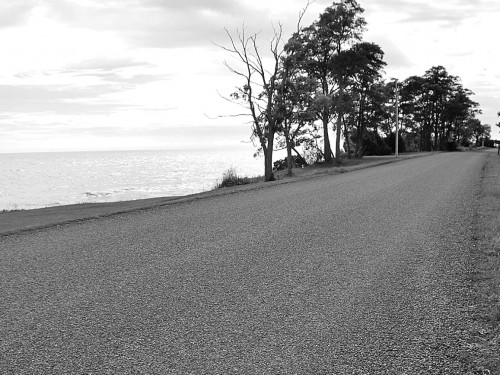County News
Buying a decade

Understanding which roads get fixed and why
How do roads get chosen for repair, rehabilitation and reconstruction? For most of the County’s history, the loudest and most persistent voice around the council table often determined which roads drew attention to the County’s roads crews.
Over the past few years, the discretion over roads has moved gradually away from the hands of politicians to the purview of professional road managers. With fewer dollars available to commit to roads reconstruction, combined with the growing realization that communities such as Prince Edward County lack the tax base to manage, maintain and replace its roads on its own, council has concluded its roads folks are best-positioned to make the tough decisions.
But occasionally the County’s roads managers undertake projects that cause motorists and residents alike to scratch their heads. One such project was the recent resurfacing of Huyck’s Point Road in Hillier.
Times reader Mark Russell wrote last week questioning the department’s recent decision to “resurface this perfectly smooth asphalt surface”. Russell, and several other readers, described it as a waste of money and that many other roads are in worse condition.
County roads chief Robert McAuley agrees that there are roads in poorer condition than Huyck’s Point Road, but says these have deteriorated beyond the point at which resurfacing would have any lasting value. Huyck’s Point Road’s base is solid and well-constructed, and that is precisely what makes the former Lakeshore Road a good candidate for this kind of preventive measure.
“It’s a function of trying to balance available dollars with trying to save or extend the life of a road as it ages,” explained McAuley. “There are other roads that are worse, but they need more work and could not all be funded with the dollars provided.
“The lifespan of surface treated roads is typically five to seven years. There comes a point where a repair application extends that lifespan, such as in this case. Later than that point, repair just becomes wasted money as the road is too poor and needs more effort, which means more money.”
McAuley has only has $667,000 to spend on road work in 2013. He says he must put that to work where it will have the greatest long term impact.
“It’s a lifecycle approach to spending limited dollars. We’re attempting to save those that can be saved by spending some dollars on them at optimum life cycle, and rebuild those that have deteriorated too far and we have funds for, all within a set annual budget.
He says Huyck’s Point Road has been on the resurfacing list for the past two years.
“There are a number of roads in the County in the “can still be saved” category, and Huyck’s Point Road was one of them. It was last done before 2006. The western portion was deteriorating faster (lots of potholes and cracks appearing), so the road was done to save the underlying road base. By doing it in this cycle, we believe we extend the working life of the road an additional decade.”


Comments (0)